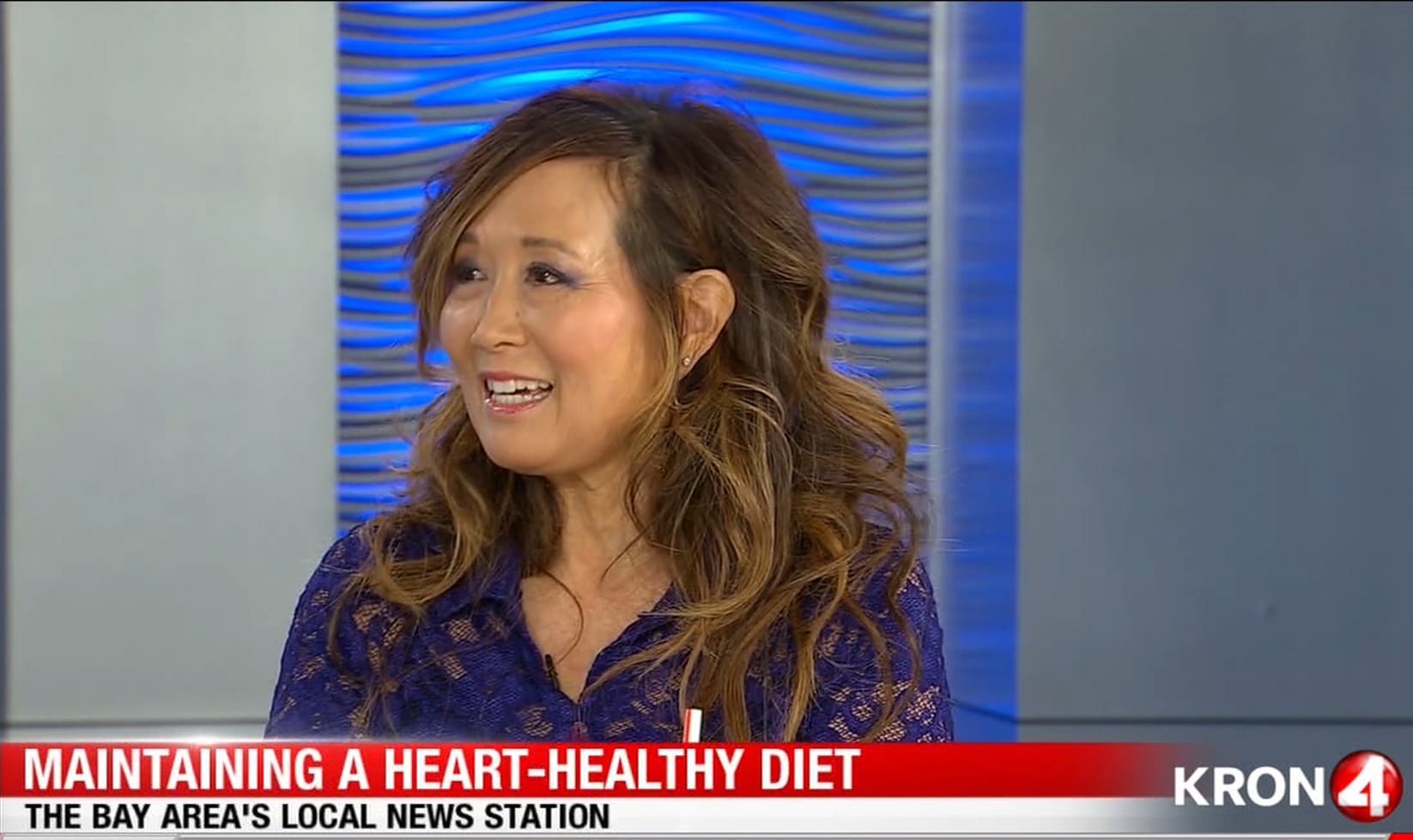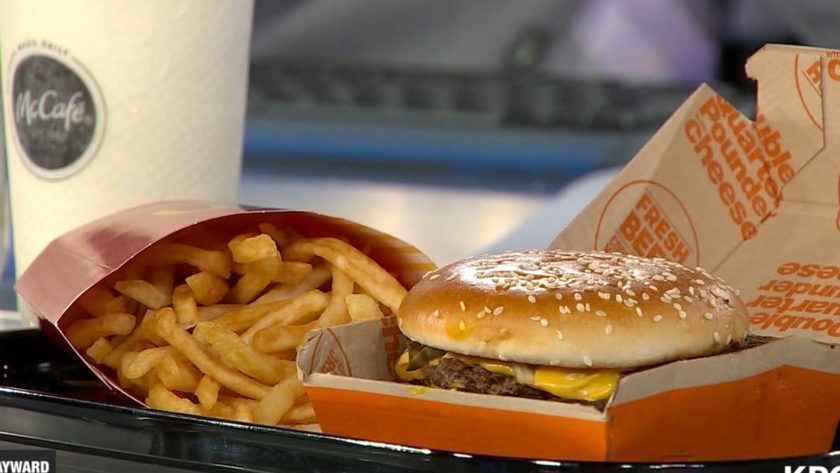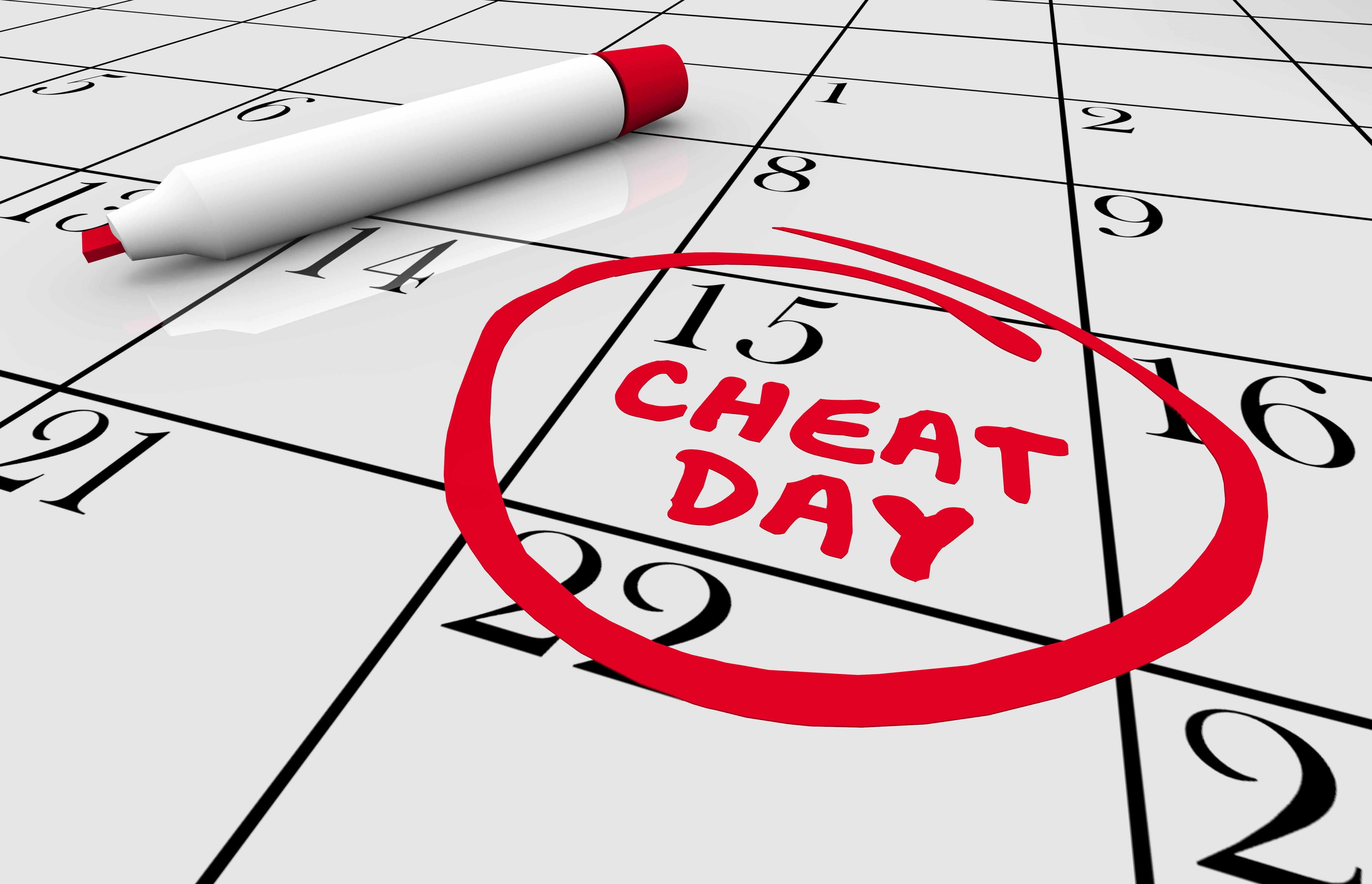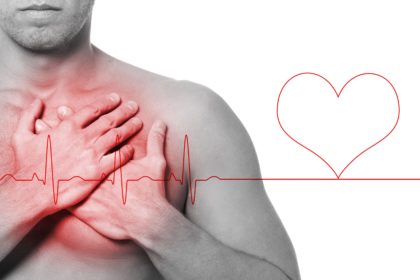You vowed to eat a heart-healthy diet and have been pretty successful, but every once in a while you can’t resist splurging on a big fat juicy cheeseburger and a thick, creamy milkshake.
So is that really all that bad? Find out if an occasional surge of fat in your diet is okay.
The ‘Shake and Cake’ Study
The Heart Research Institute in Australia performed the following “carrot cake and milkshake” test. This well-known research was published in the American College of Cardiology.
The subjects were normal weight men and women, age 18 to 40, with no cardiovascular risk factors or established heart disease.
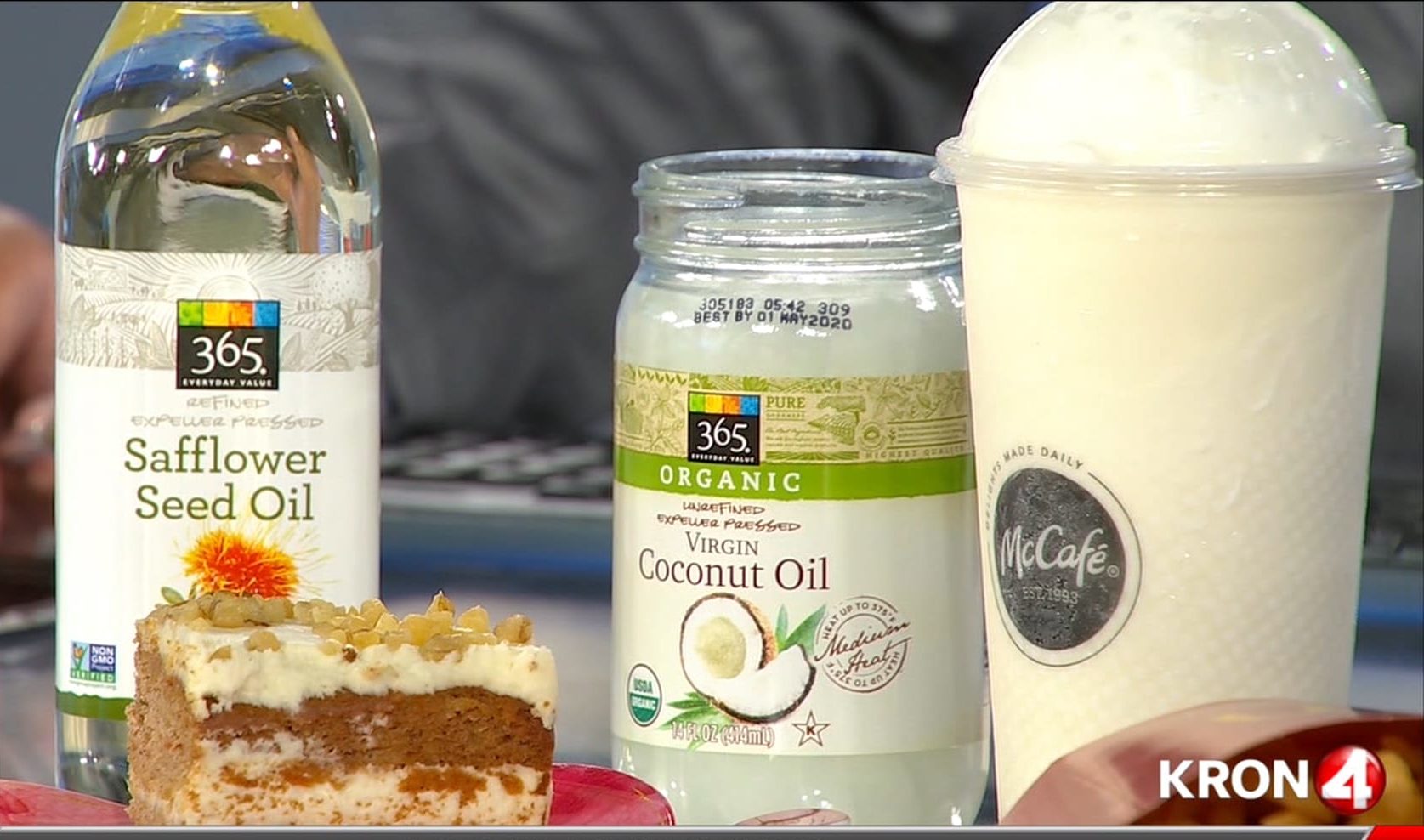
Each participant consumed fat in the form of a slice of carrot cake and a milkshake. They had to eat one gram of fat per kilogram of body weight (i.e., one gram of fat for every 2.2 pounds).
For example, a 200-lb person (91 kg) had to eat 91 grams of fat or the equivalent of eating all of the following at one meal:
- Double 1/4 pounder with cheese (45 g total fat) = 700 cal.
- A large order of French fries (24 total fat) = 510 cal.
- Large vanilla milkshake (22 g total fat) = 800 cal.
 DAY 1: The subjects ate the carrot cake and milkshake that were made with SAFFLOWER OIL which is predominantly polyunsaturated fat.
DAY 1: The subjects ate the carrot cake and milkshake that were made with SAFFLOWER OIL which is predominantly polyunsaturated fat.
Then 3 hours and 6 hours after they ate, the scientists measured their blood flow (endothelial function) and assessed how well their HDL (“good cholesterol”) was protecting their arteries from inflammation.
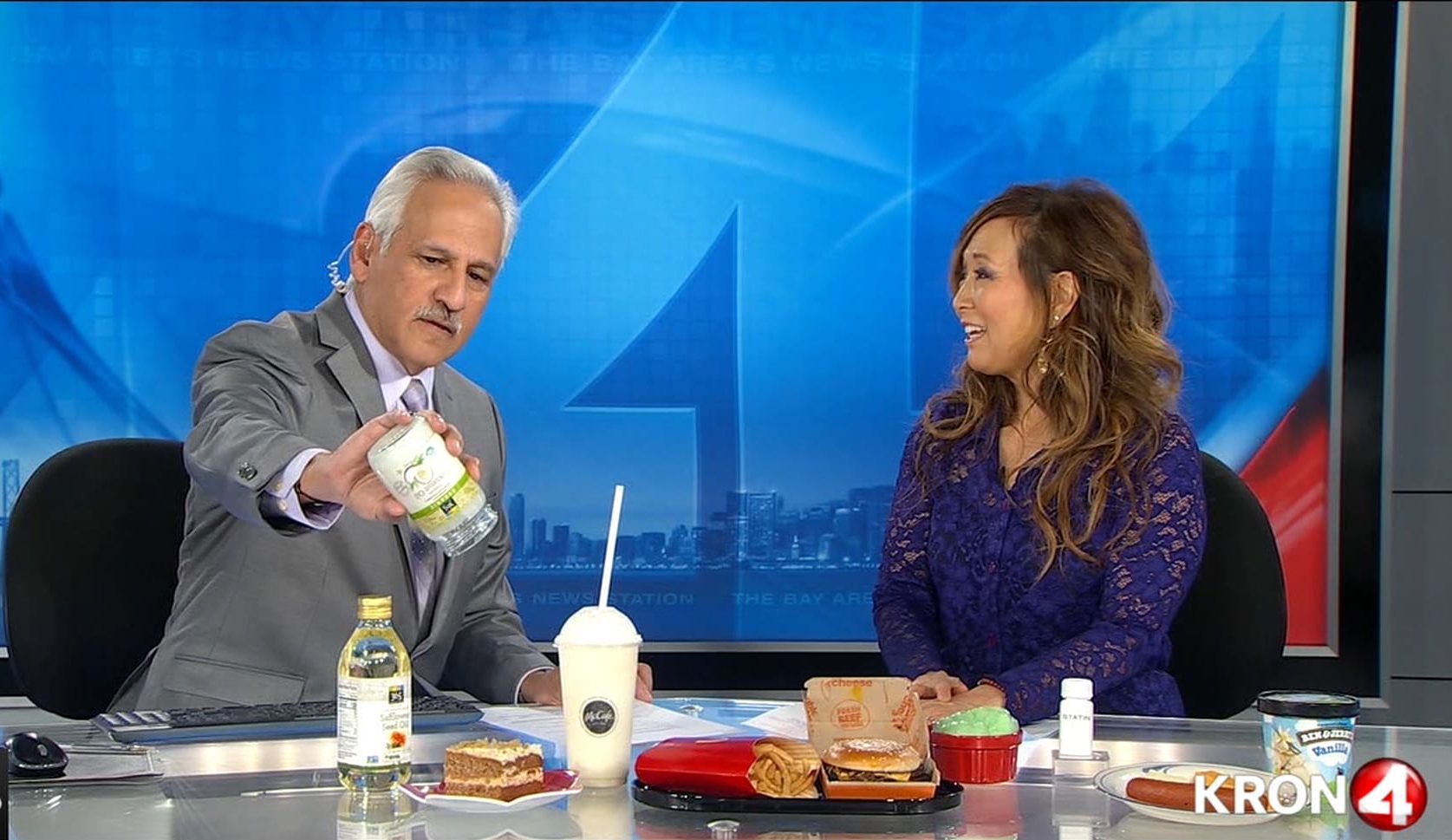
DAY 2 (one month later): The subjects returned and ate another carrot cake and milkshake meal that contained the same amount of calories and fat except the type of fat used was different.
Instead of polyunsaturated fat, the cake and shake contained COCONUT OIL which is 90% saturated fat. Saturated fats are typically solid at room temperature.
The Role of HDL (“Good Cholesterol”)
HDL cholesterol is “supposed” to be anti-inflammatory, that is, they suppress inflammatory molecules from multiplying. When arteries become inflamed:
- Substances adhere to the artery wall.
- Arterial plaques can rupture. A blood clot forms around the rupture blocking the artery, resulting in a possible heart attack.
The Results: Sludge in Your Arteries After Eating Just ONE Fatty Meal
After eating the saturated fat meal, “good” HDL cholesterol turned into “bad” HDL cholesterol particles.* Instead of being anti-inflammatory, the HDL’s became pro-inflammatory.
That is, the HDL particles did not suppress the inflammatory molecules. The HDL particles became mixed with high levels of damaging, inflammation-promoting molecules.
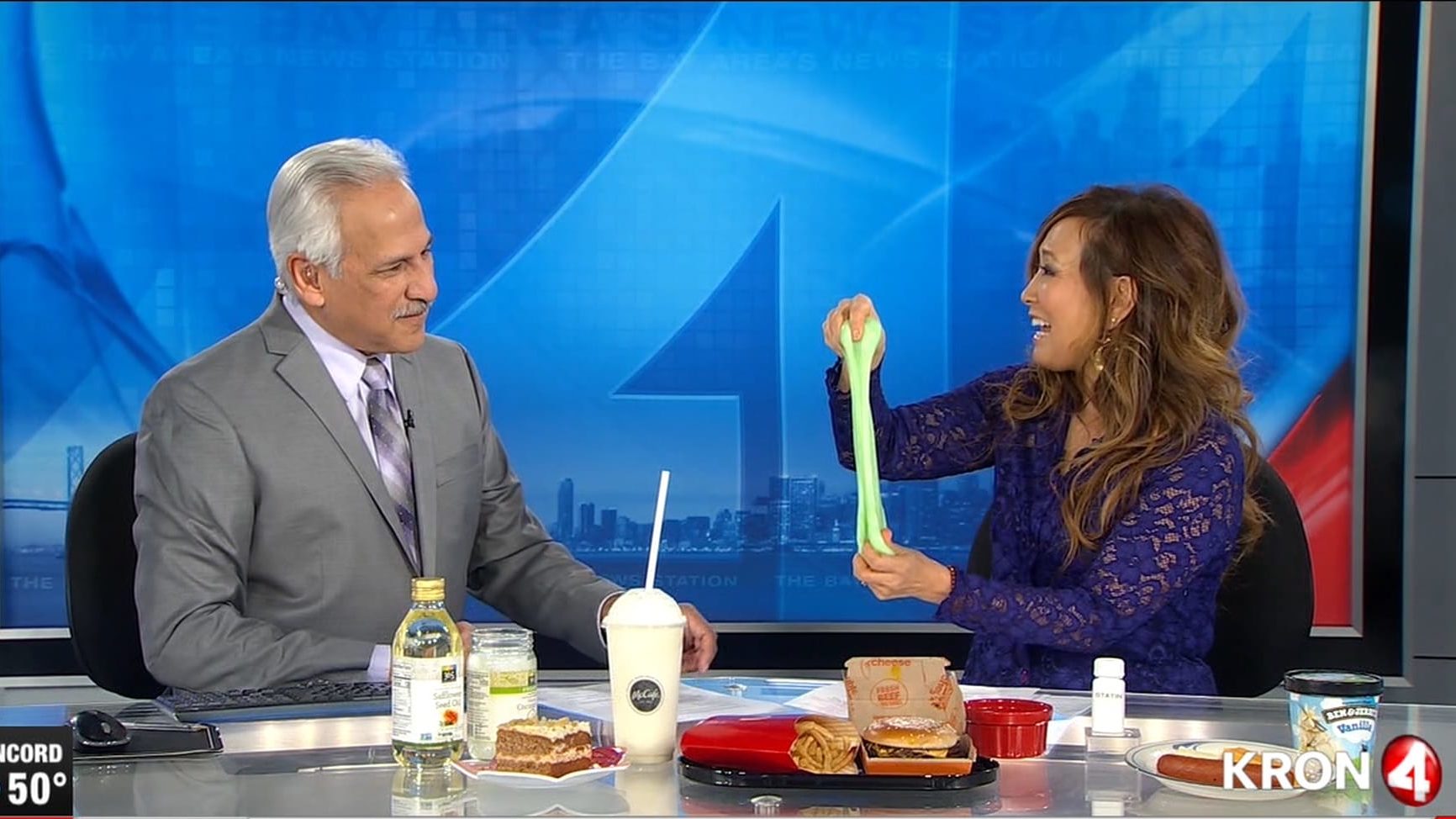
Eating a fatty meal caused the blood to THICKEN and SLOW DOWN like sludge in the forearms. (Think of congealed fat trying to flow through your drain pipes.)
This may explain why most heart attacks occur at night following a high-fat meal (the typical American dinner).
*Recent research at the Cleveland Clinic has also documented this effect.
Statin Drugs Can Only Do So Much
Statin drugs can lower LDL (“bad” cholesterol) by up to 60%, BUT people on statins who continue to eat fatty meals have arteries that still clog up over time.
Statins do NOT affect the production of HDL’s that have turned “bad” (pro-inflammatory). Statins have risks and side effects, and most importantly, you cannot “out-medicate an unhealthy diet”.
Foods High in Saturated Fats
If you consume a diet high in protein, be aware that many animal products contain high amounts of saturated fats, such as:
- Beef, pork, lamb, veal, poultry skin
- High-fat dairy (cream, cheese, milk, ice cream, cottage cheese)
- Bacon, breakfast sausages
- Hot dogs, bologna, salami
- Butter, lard, bacon fat
- Tropical oils (coconut oil, palm, palm kernel)
- Baked goods (cookies, pastries, croissants)
Cheat Meals, Cheat Days, and The Holiday Effect
You’re “good” all week, so you grant yourself a “cheat meal” or “cheat day“. Cheat meals are scheduled meals when dieters allow themselves to consume indulgent foods that they wouldn’t ordinarily eat or are not permitted to eat on their diet.
On a cheat day, they consume anything they want for the entire day. One of the ideas behind this strategy is to override the feelings of deprivation while dieting.
The downside to these cheats meals/days is that more people suffer from heart attacks and strokes when people consume more high-fat foods (as well as experience more stress), such as during the holiday season.
There is a correlation between the rise in these cardiac events during this time of year and is known as the “holiday or Christmas effect”.
If you’re vulnerable, a meal high in saturated fat can also cause angina (chest pain) — a sign of a lack of blood flow to the heart. If you have progressed heart disease, one fatty meal can be fatal.
Alternatives with Less Saturated Fat
Consider the following which contains negligible amounts of saturated fat:
- Fruits
- Vegetables
- Whole grains
- Poultry
- Fish, shellfish
- Nuts
- Legumes (beans, lentils, peas, chickpeas)
- Soybeans (tofu, tempeh, edamame)
Your Recommended Daily Limit of Saturated Fat
Consume no more than 5 to 6 percent of your daily calorie intake from saturated fats. Use the list below to figure out your maximum daily saturated fat intake (grams per day):
- Daily Calories: 1,200
- Daily Saturated Fat Limit (g): 7-8 gm
- Daily Calories: 1,400
- Daily Saturated Fat Limit (g): 8-9 gm
- Daily Calories: 1,600
- Daily Saturated Fat Limit (g): 9-10 gm
- Daily Calories: 1,800
- Daily Saturated Fat Limit (g): 10-11 gm
- Daily Calories: 2,000
- Daily Saturated Fat Limit (g): 11-13 gm
- Daily Calories: 2,200
- Daily Saturated Fat Limit (g): 12-14 gm
- Daily Calories: 2,400
- Daily Saturated Fat Limit (g): 13-16 gm
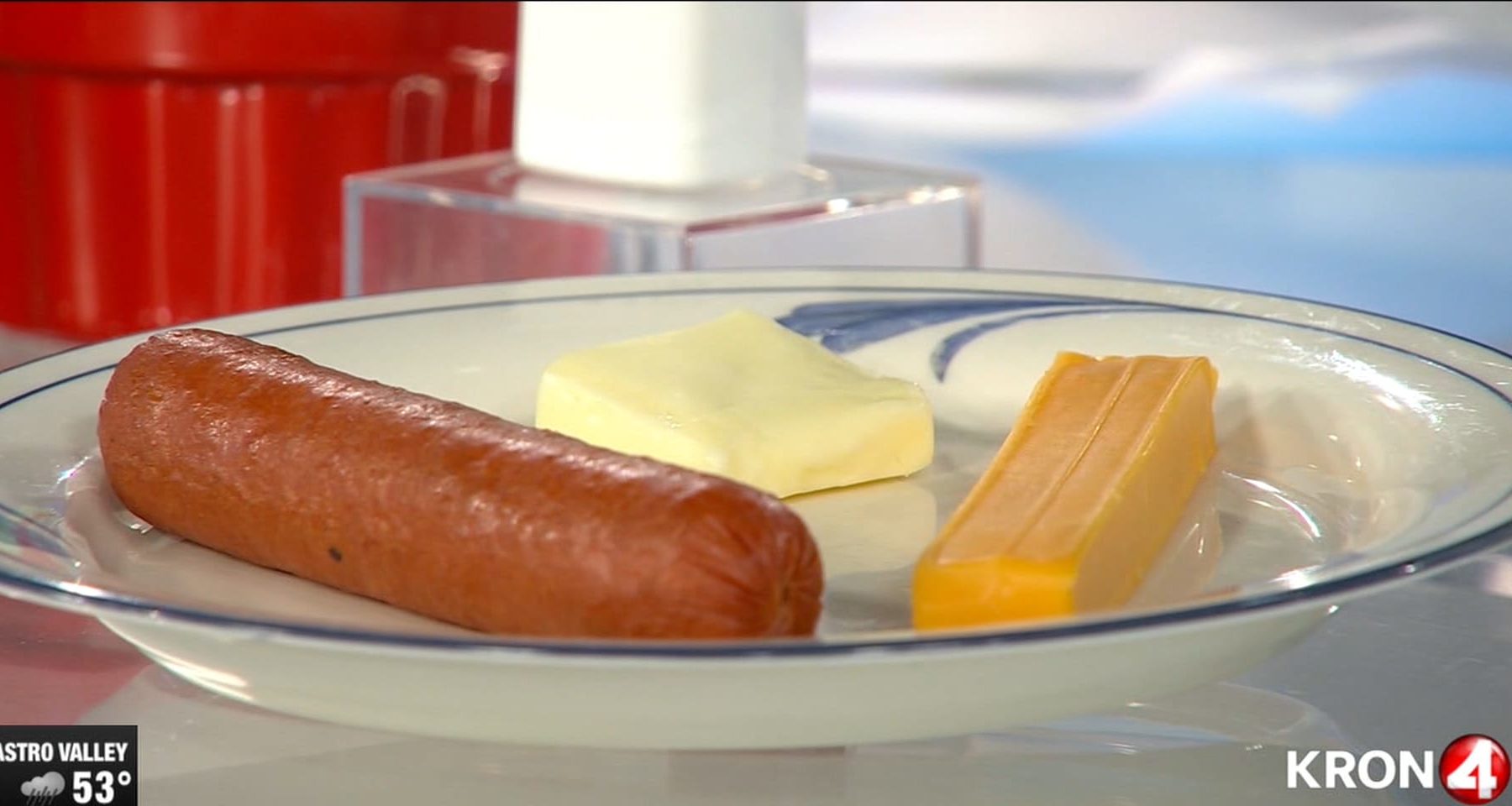
Saturated Fats in the Diet
The following are various foods that contribute to saturated fat intake in the typical American Diet:
Food / Saturated Fat Content
Milk, 1 cup:
- Whole milk, 3.25% fat* / 4.6 gm
- Low-fat, 2% fat*/ 3.1 gm (If you drink 3 cups of low-fat milk a day, you consume 9 gm of saturated fat. Depending on your daily caloric intake, that could be your limit for the day.)
- Low-fat, 1% fat* / 1.5 gm
- Ice cream, vanilla / 11.0 g
*Percentages of fat in milk are calculated by the percentage of fat BY WEIGHT, not by calories. Actually, 49% of the calories in whole milk is fat; 37% of the calories in 2% milk is fat, and 18% of the calories in 1% milk is fat.
Cheese, 1 ounce:
- Regular cheddar cheese / 6.0 gm saturated fat
- Part-skim mozzarella cheese / 2.9 gm
- Low-fat cheddar cheese / 1.2 gm
Other Dairy, 1 tablespoon:
- Butter, 1 tablespoon, 1/2 ounce / 7.0 gm
- Cream cheese, 1 tablespoon / 3.5 gm

Beef/Pork, 3 ounces cooked:
- Prime rib / 9.6 gm
- Ground beef, 70% lean/30% fat* / 9.6 gm
- Salami / 8.6 gm
- Pork loin / 8.0 gm
- New York strip steak / 7.5 gm
- Beef hot dog / 7.0 gm
- Ground beef, 75% lean/25% fat* / 6.1 gm
- Beef sirloin / 5.0 gm
- Corned beef / 5.0 gm
- Ribeye steak / 5.0 gm
- Ground beef 85% lean/15% fat* / 5.0 gm
- Filet mignon / 4.5 gm
- Ground beef, 95% lean/5% fat* / 2.6 gm
*Beware of the “lean” labeling: Ground beef that’s labeled as “70% lean” is 30% fat which is the fattiest ground beef allowable on the market. Ground beef that’s 75% or 85% lean is still fatty.
Fish, 3 ounces cooked:
- Salmon, wild sockeye, 3 ounces / 0.8 gm
- Shrimp, 3 ounces / 0.1 gm
Egg, 1 large poached / 2.0 gm
Chicken, 3 ounces roasted, skinless:
- Wing / 4.5 gm
- Thigh / 3.5 gm
- Drumstick / 2.5 gm
- Breast meat / 2.0 gm
Turkey, 3 ounces roasted, skinless:
- Wing / 3.0 gm
- Thigh / 3.0 gm
- Drumstick / 2.5 gm
- Breast / 2.0 gm
NOTE: The McDonald’s double quarter-pounder with cheese, large fries, and milk shake added up to 38.5 gm of saturated fat!
- Double 1/4 pounder with cheese = 21 g saturated fat
- Large order of French fries = 3.5 g saturated fat
- Large vanilla milkshake = 14 g saturated fat
![]() Karen’s Fit Tip: Just one fatty meal can increase your risk of a heart attack and worse yet, it can be fatal.
Karen’s Fit Tip: Just one fatty meal can increase your risk of a heart attack and worse yet, it can be fatal.
So THINK TWICE before “splurging” on a high-fat meal. Make healthy eating a long-term lifestyle versus a short-term effort, so you don’t feel deprived and feel the need to “cheat”.
